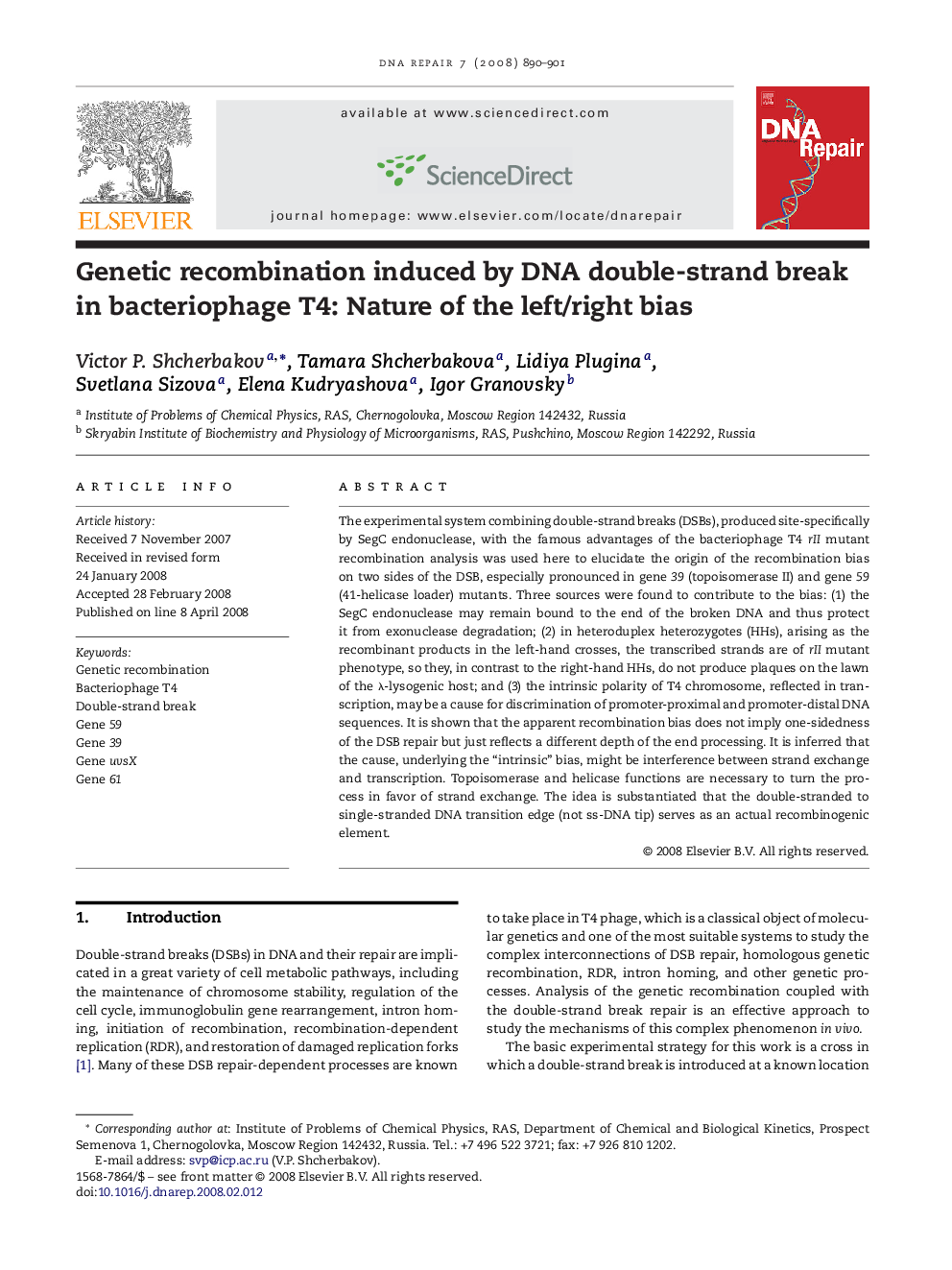| Article ID | Journal | Published Year | Pages | File Type |
|---|---|---|---|---|
| 1981195 | DNA Repair | 2008 | 12 Pages |
The experimental system combining double-strand breaks (DSBs), produced site-specifically by SegC endonuclease, with the famous advantages of the bacteriophage T4 rII mutant recombination analysis was used here to elucidate the origin of the recombination bias on two sides of the DSB, especially pronounced in gene 39 (topoisomerase II) and gene 59 (41-helicase loader) mutants. Three sources were found to contribute to the bias: (1) the SegC endonuclease may remain bound to the end of the broken DNA and thus protect it from exonuclease degradation; (2) in heteroduplex heterozygotes (HHs), arising as the recombinant products in the left-hand crosses, the transcribed strands are of rII mutant phenotype, so they, in contrast to the right-hand HHs, do not produce plaques on the lawn of the λ-lysogenic host; and (3) the intrinsic polarity of T4 chromosome, reflected in transcription, may be a cause for discrimination of promoter-proximal and promoter-distal DNA sequences. It is shown that the apparent recombination bias does not imply one-sidedness of the DSB repair but just reflects a different depth of the end processing. It is inferred that the cause, underlying the “intrinsic” bias, might be interference between strand exchange and transcription. Topoisomerase and helicase functions are necessary to turn the process in favor of strand exchange. The idea is substantiated that the double-stranded to single-stranded DNA transition edge (not ss-DNA tip) serves as an actual recombinogenic element.
